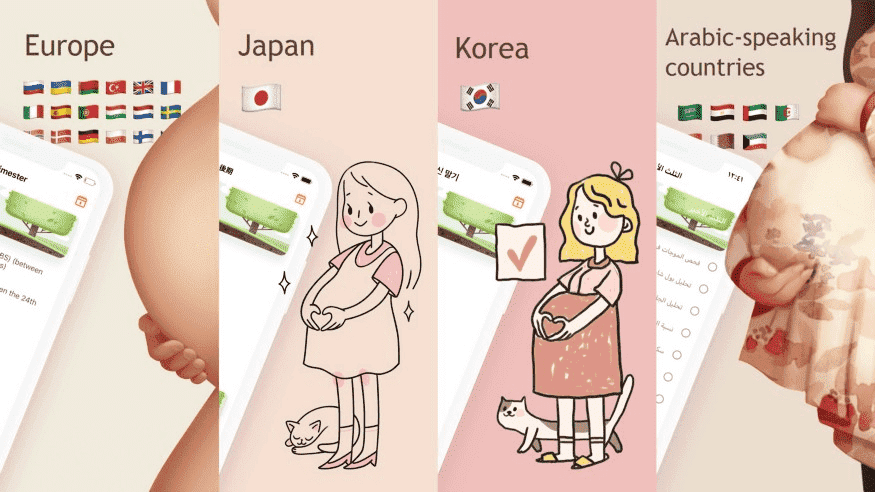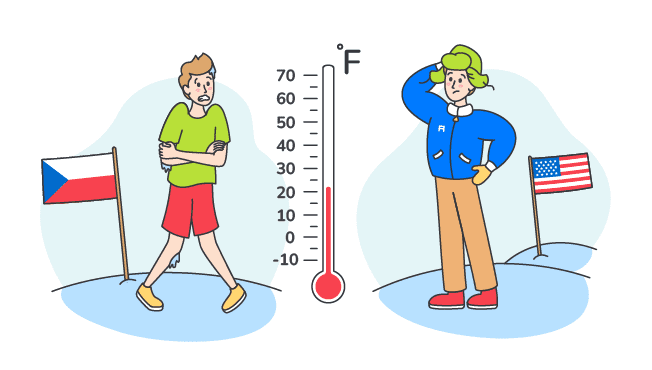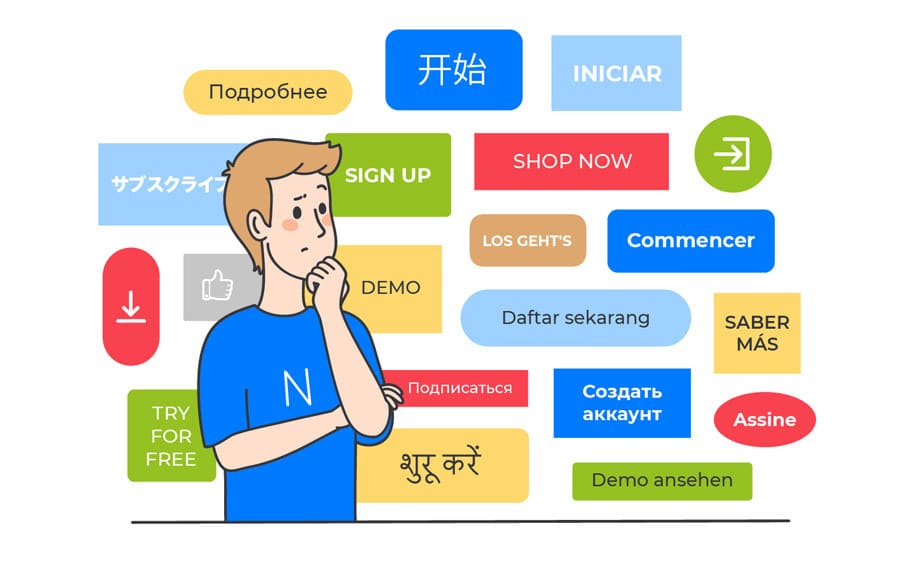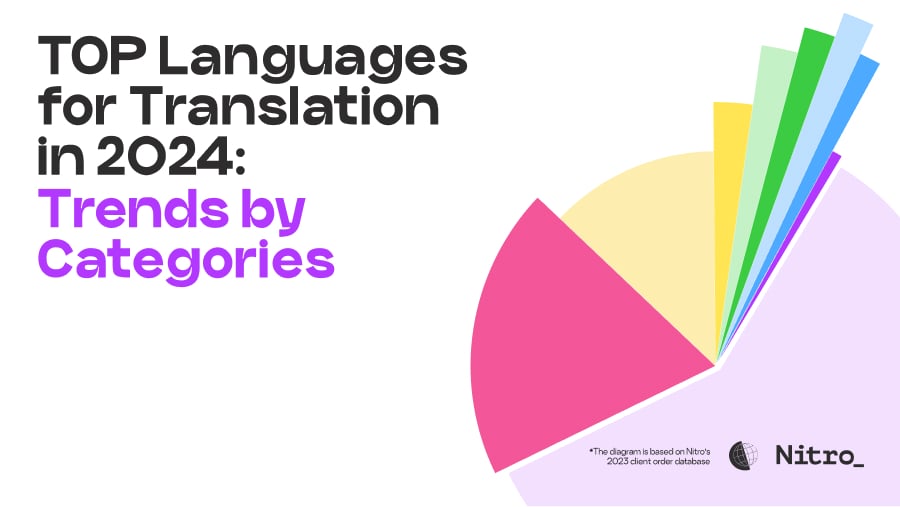Let’s say you are a Chinese entrepreneur who came up with an idea for a game. You develop a game and launch it at your local market. The game becomes extremely popular among Chinese players, so you decide to double (or triple) your profit by going global. Does this mean you need to translate your product to the languages of the regions you're targeting? Definitely. Is this all you have to do? Definitely not!
Rather than translation only, your business should ideally aim for localization (or in business jargon, l10n). Though translation often goes hand in hand with localization, the latter goes beyond the traditional concept of just adapting a language. Localization services help to adapt content to the whole broad range of values, tastes, and preferences of the target culture. To put it simply, the ultimate goal of localization is to make a customer feel like they are purchasing goods or services from a local business.
Game localization can be an investment in your success in different regions. If you happen to be a Chinese entrepreneur who wants to expand your business, we happen to have a guide on how to bring a Chinese game to Western markets. For everyone else, let’s take a look at the difference between the three terms that stand behind a product’s global expansion: translation, transcreation, and localization.
Translation vs Transcreation vs Localization
How do you know when you need localization and translation services, or even transcreation? Let’s take a closer look at these terms!
You need translation services for documents such as user manuals, medical documents, technical publications, scientific journals, and literature. This doesn't require arranging a whole team of project managers, localization engineers, and QA managers. In this case, you just need to adapt the language, and professional document translation services come in handy.
While accurate translation seems the right strategy, it can ruin a business in one fell swoop if done without double-checking the wording on whether it’s appropriate for the culture. Braniff Airlines are infamous for their ad campaign that accidentally encouraged Spanish clients to “fly naked”. The original English slogan “fly in leather” was meant to advertise luxury experience, but the word-for-word translation of “in leather” was “en cuero” – very similar to “en cueros”, which means “naked”.
Unsurprisingly, the reputation of the company was severely damaged. However, Braniff Airlines could have avoided the failure if they had gone an extra step to use transcreation instead of direct translation — in other words, if they created new phrasing that would have conveyed the same message as “fly in leather”, but was culturally appropriate. For instance, McDonald's used transcreation when adjusting its popular North American slogan “I’m lovin’ it” to the Chinese slogan “I just like it” because the Chinese word "love” is very serious and not commonly used.
Simply put, localization is the process of adapting a product or content entirely to a country or region so that it appears to have been produced within the local culture. It’s necessary when you want to grow the audience of your product, whether it be a game, software, video, app, multimedia content, or even a website. In every culture, there are many more nuances you need to consider besides the language. For example, when you do software localization, adaptation of UX/UI is as important as translation.
Translation and Localization Tools
Now that you are more familiar with the differences between translation, transcreation, and localization, let’s take a look at the most common software that helps to automate the process and save time and money both for clients and service providers.
Translation tools
You must have heard of and even used Google Translate, the most popular machine translation tool. Free algorithm-based translation tools do a good job when you want to ask for directions in a foreign country or need to quickly check the meaning of an unknown word. However, when you need a more reliable service than that done by machine, and if you are willing to pay extra for a high-quality translation, there are also a variety of professional text translation tools that offer accurate and appropriate translation by native speakers.
Localization tools
There is software specifically designed to simplify the localization process. We are talking about tools that help software developers, project managers, and translators automate their work. These tools include but are not limited to:
- localization project management tools. These are the glue of the localization process and help oversee a variety of data, e.g., monitor localization management from start to finish and coordinate tasks (here is our guide on how to choose the localization management software that perfectly fits your business goals);
- CAT (computer-aided translation) tools. These find and suggest similar translations made in previous projects, do spell and grammar check, etc;
- GTT (Google Translator Toolkit) is an app that allows you to alter translations automatically generated by Google by manually uploading relevant glossaries and translation memory;
- subtitling platforms. You can use special software like VideoProc, Kapwing, AegiSub, or do all the subtitling right in YouTube Studio when you upload a video.
How to localize American products: 2 examples
To better understand the nuances of localization for different regions, let’s take the U.S. as an example. As the country with the world’s largest economy, it boasts a ton of businesses in various industries. However, for business owners, that means extremely high competition. One way to win more clients and increase profits may be going outside to foreign markets with lower competition. As much as this decision opens up great opportunities, it also requires careful research of locales and, afterwards, ordering services from a localization company.
American to European
Why is localization so important when US-based businesses want to bring their product to European markets, for example? Some differences may be crucial: you definitely don’t want your Spanish clients to mistake May for July when they see the date 5/7/2022. In addition to that, you want to adapt the Imperial system to metric (miles to kilometers, feet to meters, pounds to kilograms, Fahrenheit to Celsius), convert the currency (dollars to euros), and change the time-zone format (14.00 instead of 2 p.m.).

As you can see in the example above, sometimes it’s adaptation that is more important than just translation. It’s important to make processing information in a customer’s brain as effortless and quick as possible. That’s why you need to take into account their cultural background. As surprising as it sounds, localization can be done completely without translation. Let us show you how.
American to British
Let’s say that you start a business in the U.S. and decide it’s time to get more English-speaking customers. In this case, you probably don't need to translate your product. However, if your target culture is British, for example, you definitely want to localize spelling (for instance, localization now becomes localisation; color becomes colour, etc.), certain words (eraser/rubber, elevator/lift, movie/film), and, of course, idioms and expressions.
The tendency to localize the same language does not only apply to English. Did you know that besides differences between American and Canadian English, the French spoken in Canada also diverges a lot from the variant spoken in France? For instance, the word "car" is translated as “voiture” in France, but a Canadian who speaks French will call it a “char”. Another example is that French Canadians more frequently use the form “on” for we, as opposed to “nous.” To avoid these and other pitfalls when localizing for the audiences of Great White North, you should be familiar with the peculiarities of the Canadian market.
Localization and Translation in Business
Tailoring your message to different markets is key, no matter how big your company is. Let’s look at some great examples of how localization can draw sales for a big enterprise and a small startup.
Localization in Corporations
You have probably heard of Coca-Cola’s 2012-2013 famous campaign “Share a Coke”. Originally started in Australia, it expanded to 50 countries, increased young adults' consumption by 7% and traffic on Facebook pages by 870%, and resulted in millions of dollars in sales. The strategy behind this tremendous success was careful consideration of every targeted market. For instance, the seemingly simple idea of printing a name on the front of a Coke bottle wouldn’t go far in China, where it is disrespectful to address other people by their first name. Instead, Coca-Cola came up with neutral titles like “artistic youth”, “cool dude”, or “close friend”.
Localization in Startups
You are a startup founder and considering whether or not you should invest in localization. Meet Wachanga, a mobile app developer for existing and soon-to-be parents. There is a lot to learn from how the startup localized its family development platform and secured the potential to dominate the niche globally. We particularly want to draw your attention to the careful choice of visual content. Anticipation of parenthood is associated with different images in different cultures. That’s what the developers kept in mind when they localized their pregnancy and babycare apps for international audiences.

Localization of the pregnancy app for Europe, Japan, South Korea, and Arabic-speaking countries

Localization of the babycare app for Europe, South Korea, Japan, and Brazil
Wachanga’s numbers speak for themselves. The platform has 8 million downloads and 2 million active users. And they share that “by localizing and adapting our product to several markets", they generated far greater profits than they could have in the United States alone.
Bottom Line
Remember that localizing content isn't limited to switching between the Imperial and metric systems. Client trust and engagement start when they can truly relate to your brand. If you launch a global product, you need to speak the same language as your potential clients.
Going deep inside the brain of a customer goes beyond translating web copy and may seem intimidating at first. How do you start? The simplest and quickest solution is professional localization services. Here at Alconost, we have localized 1500+ projects into 100+ languages, and we're ready to boost your business.













